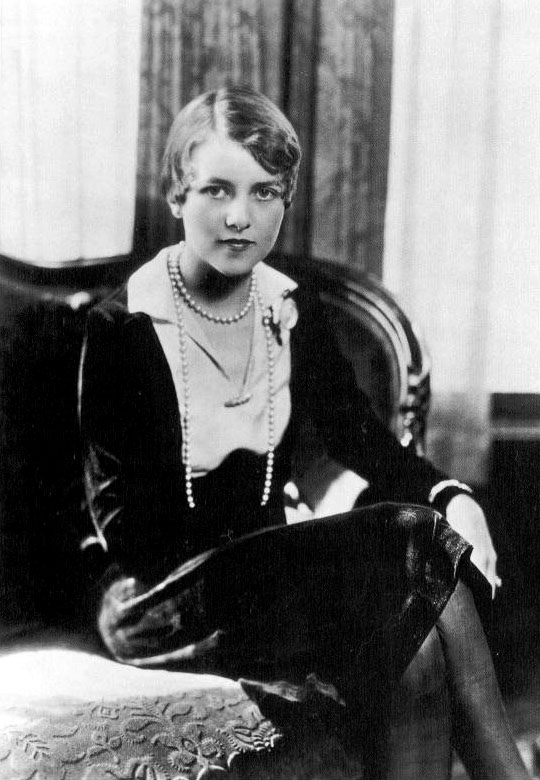
Zelda Fitzgerald, 1924, age 23. Zelda died on this day in 1948. (via scribnerbooks)
Official website of the author

Zelda Fitzgerald, 1924, age 23. Zelda died on this day in 1948. (via scribnerbooks)
Books are frozen voices, in the same way that musical scores are frozen music. The score is a way of transmitting the music to someone who can play it, releasing it into the air where it can once more be heard. And the black alphabet marks on the page represent words that were once spoken, if only in the writer’s head. They lie there inert until a reader comes along and transforms the letters into living sounds. The reader is the musician of the book: each reader may read the same text, just as each violinist plays the same piece, but each interpretation is different.

Brilliant cover art for Walter Benjamin’s The Work of Art in the Age of Mechanical Reproduction. Designed by David Pearson for Penguin’s Great Ideas series, vol. 3 (2008). (Via Flickr.) Perfect.
I think the act of reading imbues the reader with a sensitivity toward the outside world that people who don’t read can sometimes lack. I know it seems like a contradiction in terms; after all reading is such a solitary, internalizing act that it appears to represent a disengagement from day-to-day life. But reading, and particularly the reading of fiction, encourages us to view the world in new and challenging ways… It allows us to inhabit the consciousness of another which is a precursor to empathy, and empathy is, for me, one of the marks of a decent human being.
John Connolly
This video made the rounds on the web a while ago, when Converse announced the latest reinterpretation of its sneakers by designer Ryusaku Hiruma, but I only discovered it the other day.
Fashion clod that I am, I had never heard of Hiruma or his Converse shoes. For the uninitiated: Ryusaku “Sak” Hiruma is a Japanese designer who has been studying traditional shoemaking techniques in Florence for almost a decade. Over the last few years, Sak has applied old-world craft to produce chic, luxurious handmade versions of Converse’s classic Jack Purcell, Chuck Taylor, and One Star models. The latest Sak/Converse shoe, a design based on an old basketball shoe called the Star Tech, features fine leather and hand-stitching throughout. Only 64 pairs will be made, in natural shades of tan, off-white and black leather. Retailing for $600, they will be available only in New York, Boston, and Costa Mesa. (Costa Mesa?) If you’re into shoe porn, details are here and here.
I loved this video. I found it oddly touching and romantic, not just for Sak’s dedication to craft and tradition but for personal reasons. My own family was in the shoe business for several generations. Growing up, I assumed I would be too. There were no writers or artists of any kind in my family or anywhere else in my world. Even now I think I might have been very happy making shoes.
Maybe that is why I have a nagging sense that, as a writer, I don’t really “make” anything. A book is an ethereal creation, a non-object. It exists as a chain of words, separate and apart from the paper-and-ink thing we call by that name. Book publishing is only now transitioning to digital, permanently alienating the idea of a “book” from a physical object, but writing made the leap decades ago. In my own daily working life, paper plays no part. Over the two years or so it takes me to produce a novel, I never print out a hard-copy manuscript. And when I am done, I simply email a digital file to my editor. There is no object to hold, really, until I receive bound copies from the publisher, long after the writing is done. Even then, the physical books do not feel like my creation. Only the words do.
Contrast that with the intensely physical world of traditional shoemaking in this video. The materials are so lush and sensuous. Even the tools have a gorgeous patina. That the shoemaker’s artistry is lavished on such a low, practical object — when you step in shit, it is not your hat that is ruined — only makes the concrete physicality of the whole thing that much more real and authentic. Only 64 pairs of these shoes will be made, and Hiruma will touch every one with his own hands. And, poignantly, every one one of those shoes will wear out.
Novels, of course, are theoretically immortal precisely because they are insubstantial. My books can be reprinted and rescreened into infinity, and each copy is no less my creation than any other. Maybe that is what makes the shoemaker’s art so poignant to a writer: he cannot give you his creation without surrendering it himself.
A short story is like a kiss in the dark from a stranger.
Stephen King
A study uses negative book reviews to test the old saw that “all publicity is good publicity.” The result: for the most part, it is better to be trashed by the Times than ignored by it.
A crucial factor, they concluded, is how familiar a brand or product or other entity was before the negative publicity. Crunching data that cross-matched book sales against critics’ appraisals in The New York Times Book Review, they found that negative reviews of a new book by an “established” author hurt sales. “For books by relatively unknown (new) authors, however, negative publicity has the opposite effect,” increasing sales by 45 percent over their expected sales trajectory, they write. Evidently this boils down to increased awareness: the mere act of introducing something to a broader public — even by saying that it stinks — increases the chances that more members of that public will want it anyway.
Follow-up studies pointed out that as time passes, we may not remember the context in which we heard of something (a pan); we just know it’s familiar.